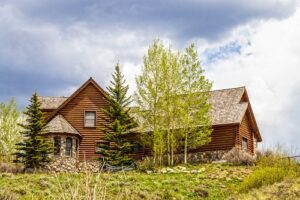Vegetation in Defensible Space for Your Boulder Home
There are a few elements in your Boulder home’s defensible space that are going to cause the biggest problems during wildfires. Vegetation is one of them. It doesn’t matter if it’s healthy or diseased or dead; the vegetation around your home is a
The good news is there are steps you can take to manage the vegetation. You can minimize the risk to your home. While you can’t completely stop all wildfires, you can at least take precautions to help reduce the spread and damage.
What Type of Vegetation Is a Problem During Wildfires?
All plants can burn when it comes to fire. However, some is going to be much more problematic than others. Diseased and dead vegetation are dried out. Without the moisture content, they are a bigger risk when it comes to fires. However, even healthy vegetation can lead to problems.
Embers will blow around from fires. If they hit leaf litter or other vegetation, the embarks can spark and form a fire. You’ll want to make sure to maintain your home as much as possible. This includes getting rid of the combustible mulch from under the windows and vents and clearing out leaf litter from gutters, decks, and other areas.
You’ll also want to look after your sheds and garages. Whether they are connected to your house or not, you’ll want to lower the risk of these parts of your land catching fire.
Use Zones to Help Minimize Vegetation Problems
There are three zones around your home to consider. The first five feet from your home (or your shed or garage) is the highest risk and is called Zone 1. Embers that land here are a direct problem for your home. You’ll want to make sure there is no vegetation around here. Sure, you may want your house to look pretty with flowers around the bottom of your windows, but you’re adding a fire hazard.
Make sure your lawn is maintained and cut back any overhanging branches. You’ll also want to consider getting rid of any trees in this section if there are any.
Zone 2 is up to 30ft from your home. You can have some vegetation around here, but you want to keep it to a minimum. Make sure any trees are maintained well and remove the vegetation from underneath when it falls. Prune the mature trees so they don’t have any branches or leaves 6-10ft from the ground.
Zone 3 is up to 100ft from your home. You’ll want to use this area as a buffer to attempt to slow down and stop the spread of the fire. Remove the dead trees from here and thing out smaller trees and shrubs. Don’t let the canopy of your trees touch to make it harder for the fire to spread.
With the zones above, you stand a good chance of reducing the spread of wildfires. You have the best protection for your home.
